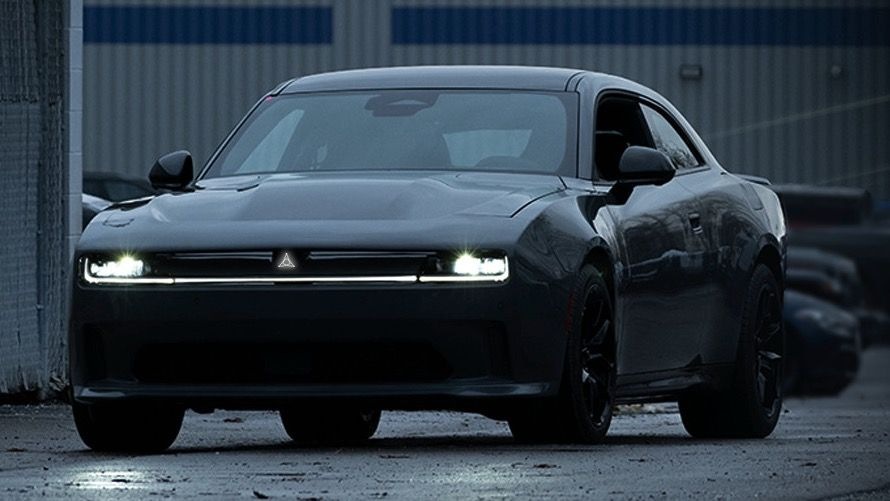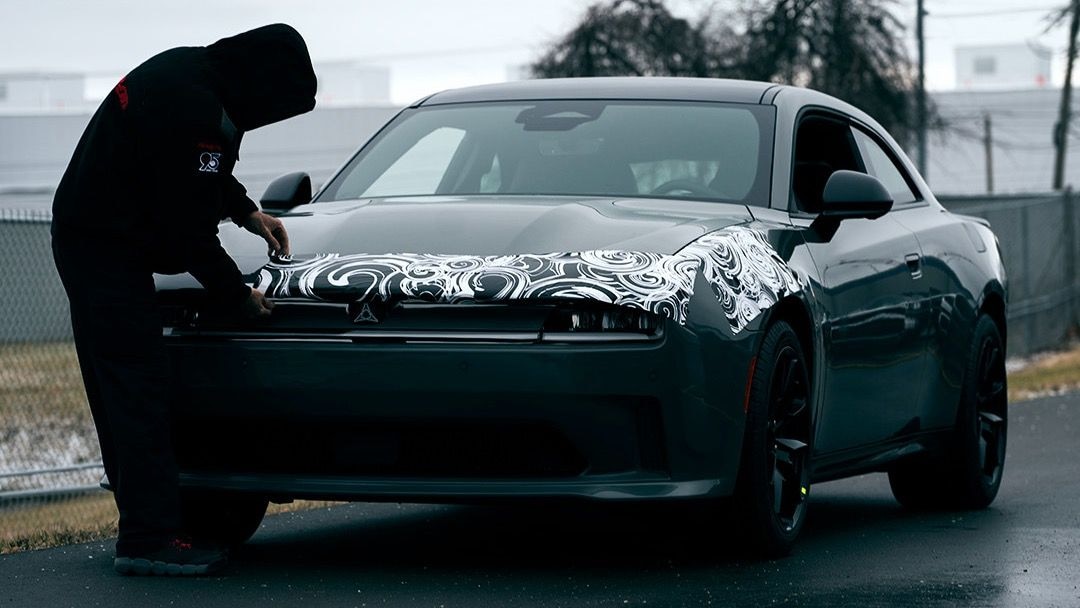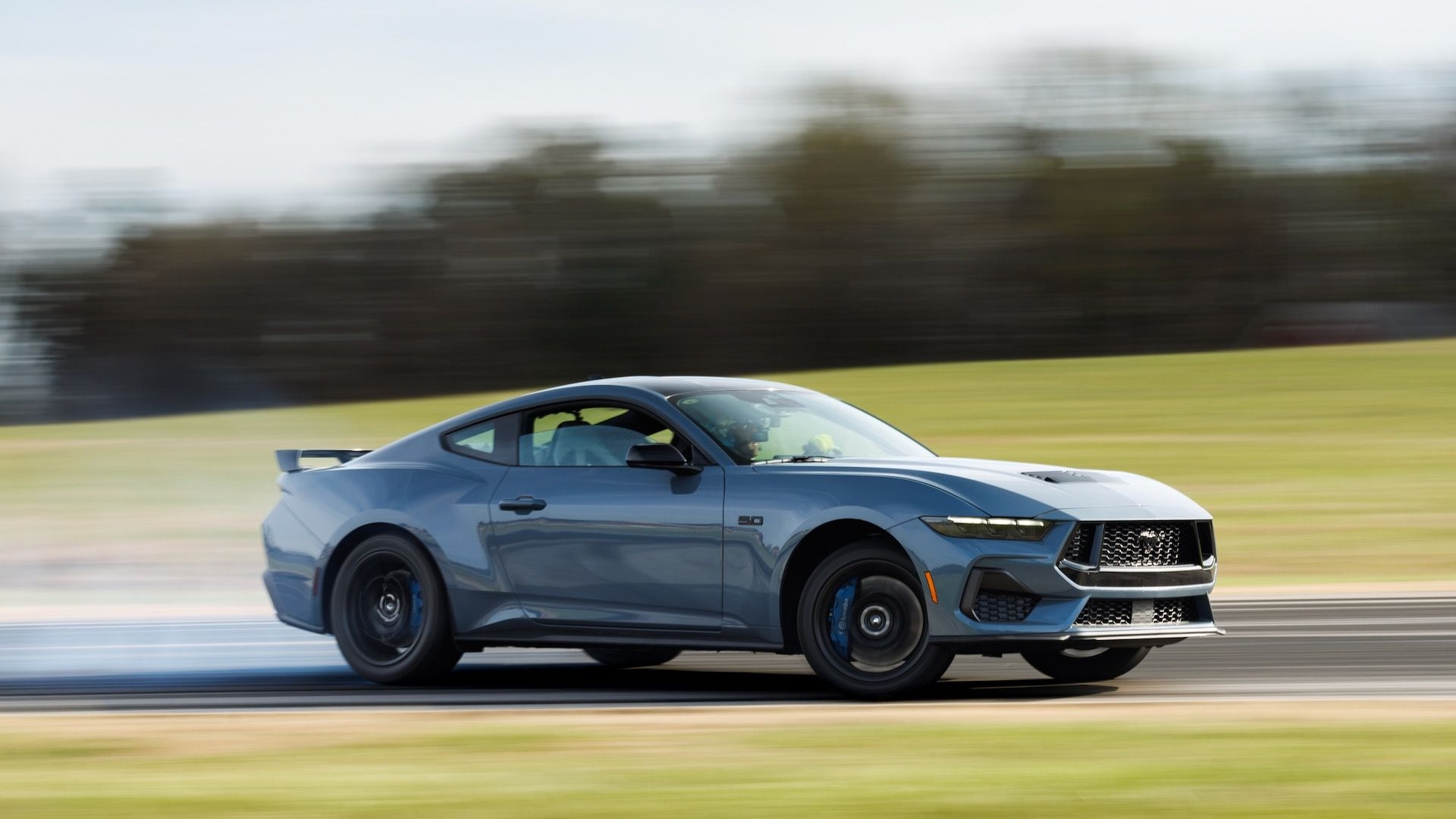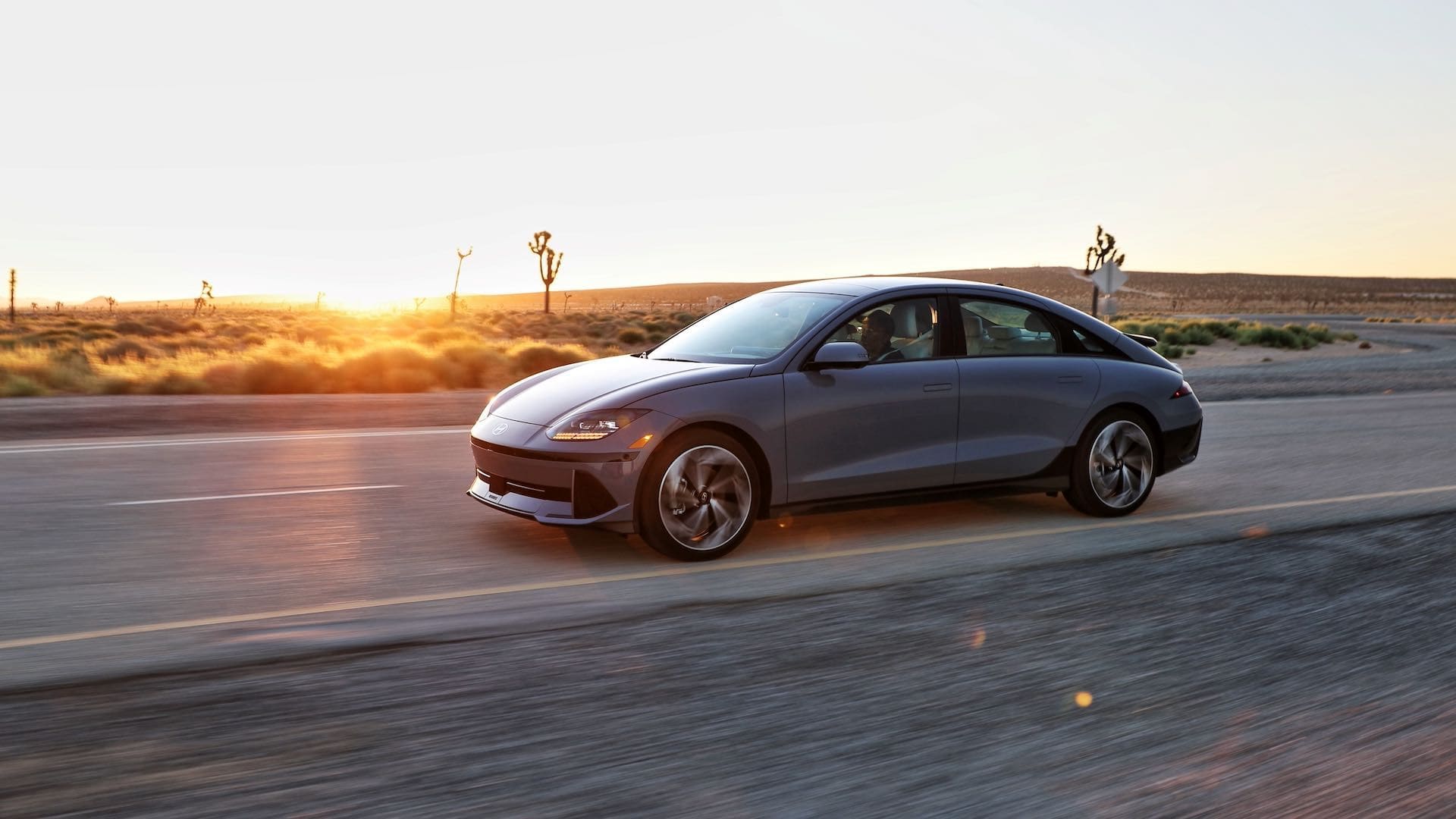An uncamouflaged prototype for Dodge's electric replacement for the Challenger and Charger muscle cars has been spotted cruising on Michigan's I-75, close to Stellantis North America's headquarters, just days after Dodge released teaser photos of the vehicle.
Video taken of the prototype on the move was uploaded to Instagram by user hellrango_nic, and shows the vehicle from the rear only.
The video reveals details including wide rear tires and how the indicators blink.
Any noise made by the prototype is drowned out by the noise of the chase vehicle.
Dodge has confirmed the car, whatever it ends up being called, will start sales in late 2024, suggesting it will arrive as a 2025 model in the U.S.
While Dodge has also stated the car will exclusively run on battery power, rumors are circulating that a gas engine, specifically a version of Stellantis' twin-turbocharged 3.0-liter inline-6 known as the Hurricane, will be an option. Don't look for a V-8. Stellantis is in the process of phasing out the V-8 for all of its brands.
The design of the car was previewed by the Charger Daytona SRT concept unveiled in 2022. Like the concept, the prototype is a two-door, though a four-door body style is thought to be coming as well. The prototype's lines are a close match to the concept. Details like the Fratzog logo have even made it to production, it seems.

Teaser image of electric Dodge Challenger successor
The platform is thought to be Stellantis' STLA Large design, a dedicated EV platform that may be capable of supporting gas engines.
Don't expect Dodge to show up with an EV spitting out over 1,000 hp. In a 2021 interview, Dodge chief Tim Kuniskis said the brand has the ability to launch an EV with 1,200 hp but it wouldn't make the car any quicker than what Dodge already offers, as there would be too much wheelspin.
The Charger Daytona SRT concept featured an all-wheel-drive powertrain Dodge said would be good for up to 800 hp, as well as a "multi-speed" transmission to provide distinct shift points like an internal-combustion car. It's unclear if all of these features will make it to the production version.







